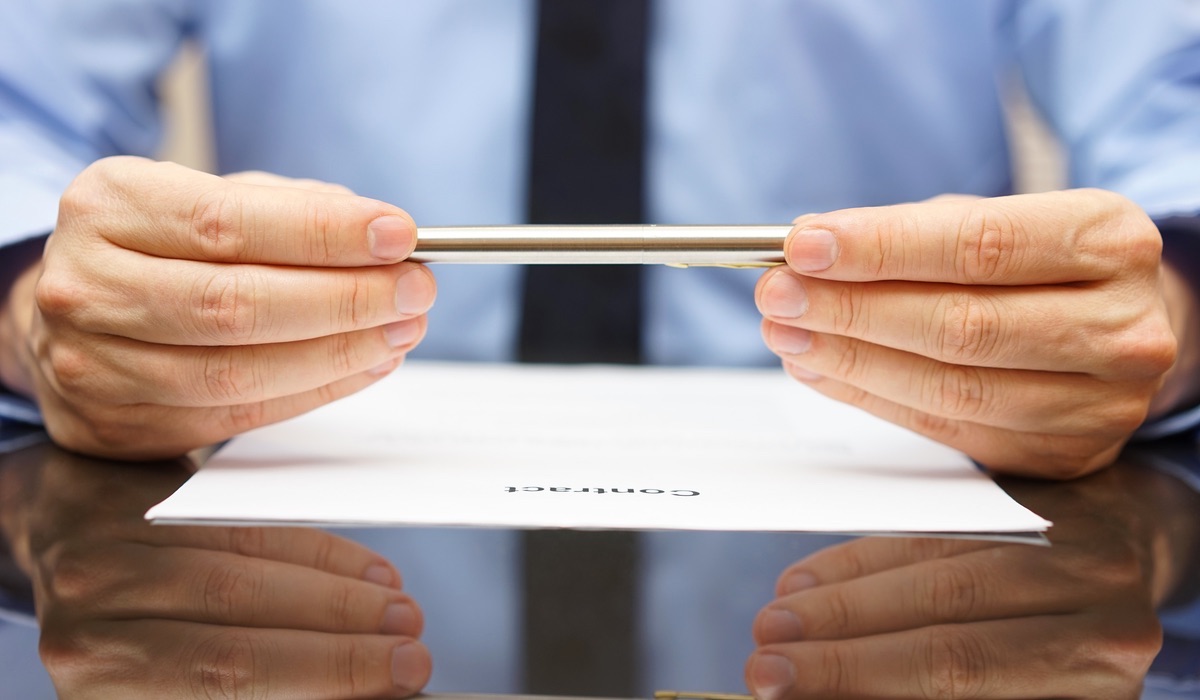As a quality assurance professional, you are likely to have noted some of the major changes in the industry and how they have related to your job specifically. The move from a simple transactional approach that did not require any amount of fostering to a more supplier-oriented relationship that requires commitment, buy-in, and collaboration between you and your buying office.
It also can not go unnoted that there are also much more stringent guidelines and compliance criteria to adhere to. With this in mind, it is important to note these changes and make adjustments where necessary. As this will keep you at the forefront of global trends and keep you competing in a global market. In this blog post, we will explore some of the historic global sourcing trends and what the changes in these trends can mean for you and your supplier relationships.
Through the years the technological revolution has optimized every sector on the planet, the shift from a transactional approach to procurement to a more strategic, holistic approach to the entire supply chain, with an emphasis on stronger supplier relationships to fully optimize the entire supply chain.
 Let’s take a dive into some of the historical trends with regards to global sourcing. A brief overview will provide us with why we keep up with these trends and what these trends mean for today. They underpin the way in which we currently view and conduct sourcing, so it is important to understand how sourcing has evolved.
In the early 60’s there was a great focus on purchasing although this was still a clerical based position, as we moved through to the 70’s there was an acknowledgement of the enormity of the task so it became its own department, a department solely focused on purchasing and all the procedures that go into that. As history goes, politics, the environment, and government affect every element of the economy and the manner in which it functions, shifts and changes.
The oil embargo in the late 70’s pushed the agenda of purchasing into the hands of businesses, this made purchasing in the 80’s take a more strategic look into quality, quantity, timing, reliability, and strategy. As I am sure you are aware, the 90’s was all about reducing costs, sometimes at the expense of quality. Although there was also a greater emphasis on developing long-term supplier relationships, with long-term contracts.
This era also birthed good supplier relationship management. The progression of technology felt its way through each decade making the systems of sourcing that much easier and a more efficient procedure, not to say that the complexities of sourcing did not grow alongside that. Today we see technology at the forefront of our sourcing strategies, allowing room for efficiency, transparency, accountability in order to work towards a more unified, productive and strategic approach to sourcing.
Let’s take a dive into some of the historical trends with regards to global sourcing. A brief overview will provide us with why we keep up with these trends and what these trends mean for today. They underpin the way in which we currently view and conduct sourcing, so it is important to understand how sourcing has evolved.
In the early 60’s there was a great focus on purchasing although this was still a clerical based position, as we moved through to the 70’s there was an acknowledgement of the enormity of the task so it became its own department, a department solely focused on purchasing and all the procedures that go into that. As history goes, politics, the environment, and government affect every element of the economy and the manner in which it functions, shifts and changes.
The oil embargo in the late 70’s pushed the agenda of purchasing into the hands of businesses, this made purchasing in the 80’s take a more strategic look into quality, quantity, timing, reliability, and strategy. As I am sure you are aware, the 90’s was all about reducing costs, sometimes at the expense of quality. Although there was also a greater emphasis on developing long-term supplier relationships, with long-term contracts.
This era also birthed good supplier relationship management. The progression of technology felt its way through each decade making the systems of sourcing that much easier and a more efficient procedure, not to say that the complexities of sourcing did not grow alongside that. Today we see technology at the forefront of our sourcing strategies, allowing room for efficiency, transparency, accountability in order to work towards a more unified, productive and strategic approach to sourcing.
 Global sourcing as a whole has made it essential for companies to improve their internal processes in order to continue being successful and at the forefront of global trends. This is not always possible with the speed at which technology evolves. You might find that it may be beneficial for you to adopt specific strategies to become more adaptable and dedicate time to continuously research changes that occur in order to keep on top of this ever-changing industry.
Below is a list of sourcing strategy patterns that may resonate with you:
Global sourcing as a whole has made it essential for companies to improve their internal processes in order to continue being successful and at the forefront of global trends. This is not always possible with the speed at which technology evolves. You might find that it may be beneficial for you to adopt specific strategies to become more adaptable and dedicate time to continuously research changes that occur in order to keep on top of this ever-changing industry.
Below is a list of sourcing strategy patterns that may resonate with you:
The Evolution of Global Sourcing
 Let’s take a dive into some of the historical trends with regards to global sourcing. A brief overview will provide us with why we keep up with these trends and what these trends mean for today. They underpin the way in which we currently view and conduct sourcing, so it is important to understand how sourcing has evolved.
In the early 60’s there was a great focus on purchasing although this was still a clerical based position, as we moved through to the 70’s there was an acknowledgement of the enormity of the task so it became its own department, a department solely focused on purchasing and all the procedures that go into that. As history goes, politics, the environment, and government affect every element of the economy and the manner in which it functions, shifts and changes.
The oil embargo in the late 70’s pushed the agenda of purchasing into the hands of businesses, this made purchasing in the 80’s take a more strategic look into quality, quantity, timing, reliability, and strategy. As I am sure you are aware, the 90’s was all about reducing costs, sometimes at the expense of quality. Although there was also a greater emphasis on developing long-term supplier relationships, with long-term contracts.
This era also birthed good supplier relationship management. The progression of technology felt its way through each decade making the systems of sourcing that much easier and a more efficient procedure, not to say that the complexities of sourcing did not grow alongside that. Today we see technology at the forefront of our sourcing strategies, allowing room for efficiency, transparency, accountability in order to work towards a more unified, productive and strategic approach to sourcing.
Let’s take a dive into some of the historical trends with regards to global sourcing. A brief overview will provide us with why we keep up with these trends and what these trends mean for today. They underpin the way in which we currently view and conduct sourcing, so it is important to understand how sourcing has evolved.
In the early 60’s there was a great focus on purchasing although this was still a clerical based position, as we moved through to the 70’s there was an acknowledgement of the enormity of the task so it became its own department, a department solely focused on purchasing and all the procedures that go into that. As history goes, politics, the environment, and government affect every element of the economy and the manner in which it functions, shifts and changes.
The oil embargo in the late 70’s pushed the agenda of purchasing into the hands of businesses, this made purchasing in the 80’s take a more strategic look into quality, quantity, timing, reliability, and strategy. As I am sure you are aware, the 90’s was all about reducing costs, sometimes at the expense of quality. Although there was also a greater emphasis on developing long-term supplier relationships, with long-term contracts.
This era also birthed good supplier relationship management. The progression of technology felt its way through each decade making the systems of sourcing that much easier and a more efficient procedure, not to say that the complexities of sourcing did not grow alongside that. Today we see technology at the forefront of our sourcing strategies, allowing room for efficiency, transparency, accountability in order to work towards a more unified, productive and strategic approach to sourcing.
Check out our comprehensive guide to learn more about implementing a global quality assurance system.
What do these changes in sourcing mean for you?
 Global sourcing as a whole has made it essential for companies to improve their internal processes in order to continue being successful and at the forefront of global trends. This is not always possible with the speed at which technology evolves. You might find that it may be beneficial for you to adopt specific strategies to become more adaptable and dedicate time to continuously research changes that occur in order to keep on top of this ever-changing industry.
Below is a list of sourcing strategy patterns that may resonate with you:
Global sourcing as a whole has made it essential for companies to improve their internal processes in order to continue being successful and at the forefront of global trends. This is not always possible with the speed at which technology evolves. You might find that it may be beneficial for you to adopt specific strategies to become more adaptable and dedicate time to continuously research changes that occur in order to keep on top of this ever-changing industry.
Below is a list of sourcing strategy patterns that may resonate with you:
- Technology oriented sourcing: Technology can have a transformational impact on your supply chain and your management systems, allowing for technical innovations to your sourcing strategy, will assist in keeping you ahead of global trends.
- Cost oriented global sourcing: The goal here is to save costs. This strategy can be useful for standardized products with easily accessible suppliers.
- Competition oriented global sourcing: A strategic competitive strategy with the goal being to gain new product ideas by looking for a broad range of good suppliers to increase competition.
- Partnership oriented global sourcing: This approach highlights the collaborative approach of engaging suppliers in long-term partnerships allowing room for information sharing, there is also investment in the end product or outcome this ensures full client satisfaction. This, in turn, leads to constant improvements along your supply chain.

 will provide an easier platform to discuss these matters in-depth, with absolute understanding and clarity. Personally I find Zoom a favorite for all conference calling, it has helped me stay in touch with a lot more ease than just relying on email.
Now that we have spoken about the means of communication, we need to address the frequency and manner of communication.
“How often do you phone your supplier to just talk about basic business operations?”
The more constant the flow of communication is, the more you will begin to get to know your supplier, and where your business sits in the grander scheme of their operations (and how much they stand to lose if they make mistakes).
This level of trust that you begin to build with your supplier will help to keep them honest and accountable if you happen to receive a delivery of products that are non compliant.
This kind of communication provides clarity and indicates to your supplier that you trust them to fix the problem to achieve the level of compliance that your company has set as the standard.
will provide an easier platform to discuss these matters in-depth, with absolute understanding and clarity. Personally I find Zoom a favorite for all conference calling, it has helped me stay in touch with a lot more ease than just relying on email.
Now that we have spoken about the means of communication, we need to address the frequency and manner of communication.
“How often do you phone your supplier to just talk about basic business operations?”
The more constant the flow of communication is, the more you will begin to get to know your supplier, and where your business sits in the grander scheme of their operations (and how much they stand to lose if they make mistakes).
This level of trust that you begin to build with your supplier will help to keep them honest and accountable if you happen to receive a delivery of products that are non compliant.
This kind of communication provides clarity and indicates to your supplier that you trust them to fix the problem to achieve the level of compliance that your company has set as the standard.
 importers that do not pay on time so as to avoid those kinds of risks for themselves in the future.
What is advisable with regards to payment is ensuring that you have laid out all your payment terms with your supplier. In doing this you create a level of transparency with your supplier which can prove to be invaluable.
If you have been in this position before, as I am sure you have, I would say that the best practice here would be the same as tip #1;
Communication
You need to communicate your situation immediately, creating an honest and open relationship with your supplier which will put you in good stead for future orders.
importers that do not pay on time so as to avoid those kinds of risks for themselves in the future.
What is advisable with regards to payment is ensuring that you have laid out all your payment terms with your supplier. In doing this you create a level of transparency with your supplier which can prove to be invaluable.
If you have been in this position before, as I am sure you have, I would say that the best practice here would be the same as tip #1;
Communication
You need to communicate your situation immediately, creating an honest and open relationship with your supplier which will put you in good stead for future orders.
 This knowledge creates an improvement in their service to you as operational times and
This knowledge creates an improvement in their service to you as operational times and .jpg)


